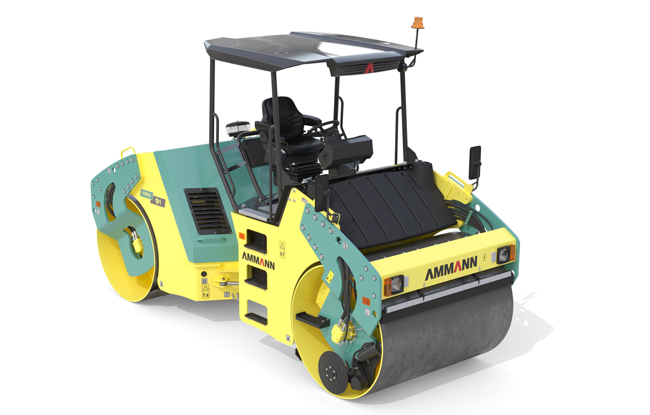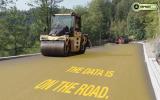
New compaction machines are offering improved performance for road builders, with equipment being introduced to meet the specific needs of key markets.
The model offers optimum drum dimensions, as well as an array of frequencies and amplitudes to deliver productivity and versatility on a variety of jobsites, according to the firm. The company claims that the machine’s combination of features and setting possibilities, as well as a novel propulsion system, help the ARX 91 achieve optimum compaction results. This design also allows the compactor to achieve specified grades with minimal passes, while using less fuel than competing machines.
Typical applications include medium and large jobsites for paving roads, airfields, harbours and parking lots.
Power comes from a
The ARX 91 has maximum working speed of 7km/h, maximum travel speed of 12km/h and gradeability of up to 40%.
Dynapac is now offering new asphalt solutions for the Chinese market. The CC6200 articulated asphalt compactor is being made available in its latest version to meet low emission requirements for China. The machine weighs in at 13.5tonnes and can deliver vibration frequencies of 51Hz or 67Hz and either 166kN or 106kN respectively. High manoeuvrability is claimed as well as high quality compaction and it can also provide 28.2kg/cm.
On a similar note,
The HD35VO is a 3.47tonne double drum model with 1.2m-wide drums. The HD35VT meanwhile is the combination roller variant, weighing 3.32tonnes.
The HD30VO is a double drum unit with drum widths of 1m that weighs 3.24tonnes. The HD30VT is the combination roller variant weighing 3.1tonnes.
Aimed at the rental segment in Europe meanwhile,
The machine has a maximum operating weight of 2.74tonnes and is powered by a diesel that meets the Tier 4 Final emissions legislation and delivers 18.5kW. The firm claims that this unit offers high fuel economy without the need for a costly DPF or fuel additives. It features three simple, switchable vibration settings: for both drums, independent front and independent rear, with Automatic Vibration Control as standard. Also standard on the new model is the JCB LiveLink telematics system which offers machine location information, real time geofencing, curfew alerts and it also aids service planning.
However Sakai’s novel design offers both oscillation and vibration on both drums. This allows the user a wide degree of compaction modes, with the options of either oscillation or vibration on both drums or just one drum. And Sakai claims that its novel feature of both oscillation and vibration for both drums means increased productivity over rival units. The machine can achieve compaction density in half the number of passes as both drums can deliver the correct form of compaction, whichever the requirement for the specification.
As with other rollers featuring oscillation, the machine suits duties such as compacting on bridges or in urban areas. In the former instance conventional vibration could cause structural issues and in the latter, vibration could cause disturbance, upset sensitive computing equipment or potentially damage nearby historic buildings.
The oscillation and vibration mechanisms are gear driven rather than featuring belt drives, which reduces maintenance needs significantly according to the firm. The machine weighs 13.5tonnes if fitted with a canopy and 14.3tonnes if specified with a cab, while power comes from a
The firm is also offering its TW354W-K and SW354W-K models, which are more basic machines aimed at the rental market. The machines share the same basic structure, with the former being the combination version and the latter being the double drum variant. The machine has a 1.3m drum width, which measure(s) 675mm in diameter, while power comes from a 26kW












